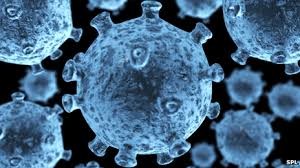AIDS is a medical condition in which the affected person’s immunity is deteriorating due to loss of immune cells. Due to this the affected individual is prone to all kind of infectious diseases. Such kinds of people are unable to recovery from simple infectious diseases which are quite common and able to recover from it easily. In such conditions the affected person can lose his life due to lack of immune response. Read about AIDS-truth and myths.
Table of Contents
AIDS-truth and myths

AIDS is caused due to the infection of HIV Human Immuno Deficiency Syndrome. It was first discovered in 1980’s in Africa. Thereafter it spread wide across the global very fast and at present there are many individual suffering from this infection. It can effect from an infant to old person. Large amount of infected people are young one ranging from 17 to 30 due to unsafe sex with an infected person. HIV can infect primates too; in fact it was discovered first in gorillas.
Transmission
HIV virus resides in the body fluids of an infected person, so contact to any body fluids like blood, semen, vaginal secretions etc hosting the virus causes the infection to the healthy individual. Following are the means of transmission of HIV from an infected individual to another
- Sexual contact- Having unsafe and unprotected sex with an infected person causes
- transmission of HIV. It can transfer in both homosexuals and hetero sexual s. Possibility of transfer of HIV is more in homosexual men.
- Pregnancy- Mother who is pregnant may
- have chances to transfer the virus to the fetus
- Blood transfusion- Many earlier cases of HIV positive are due blood transfusions, nowadays blood is being thoroughly tested for HIV and then used for blood transfusion
- Injections- Use of same syringe for intravenous drugs used by an infected person.
Myths
There are many myths about the transmission of HIV. Due to this people who are HIV positive facing problems like isolation by family friends and society instead of receiving support and care.
HIV doesn’t spread from the following:
- Casual touching like hugging, shaking hands and kissing

- By using the same toilets
- By residing in the same house
- Sharing objects
- Mosquito bites
Treatment
There is no cure for HIV infection. Vaccination isn’t also available. However people infected with HIV can take antiretroviral treatment which suppresses HIV by hindering it in its multiplication. Although once infected cannot be treated completely but can help in boosting immune system if it is detected early and proper care is taken in avoiding other secondary infections. Although an individual is infected with HIV they may not show symptoms, in such kind of individuals the virus lies latent or dormant, it may be or may not become active in one’s life.


